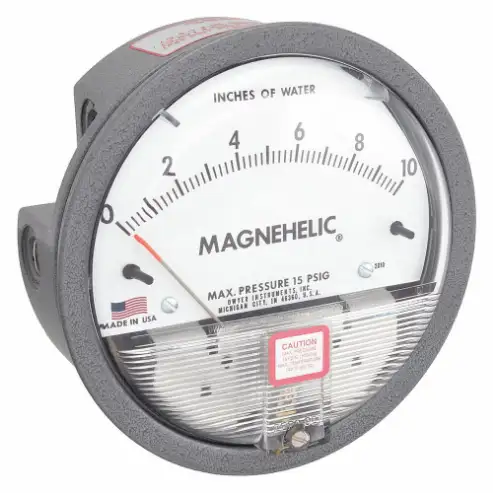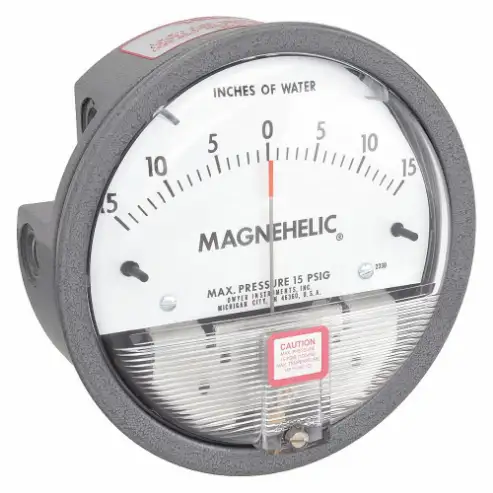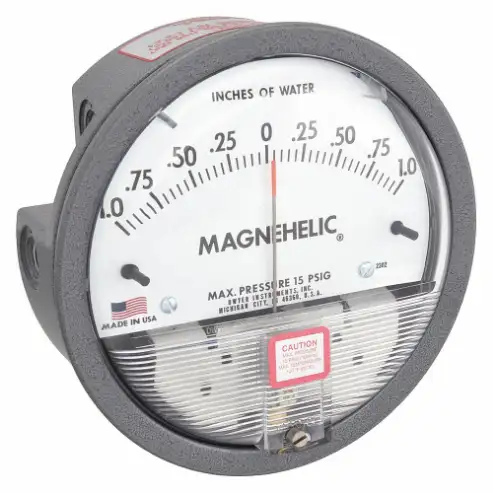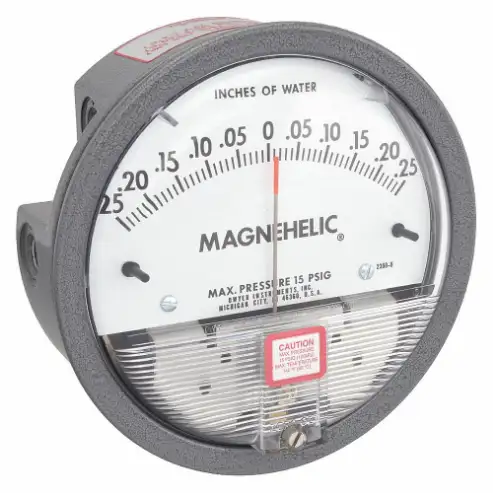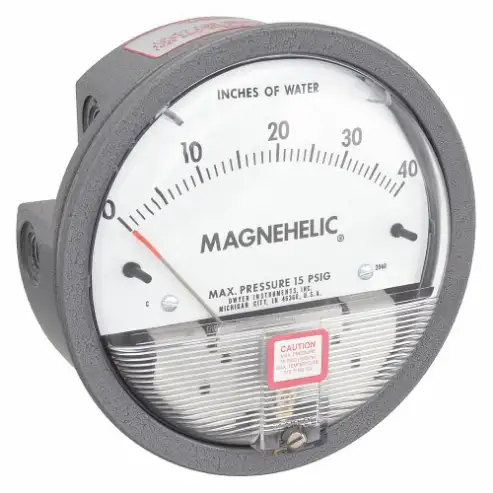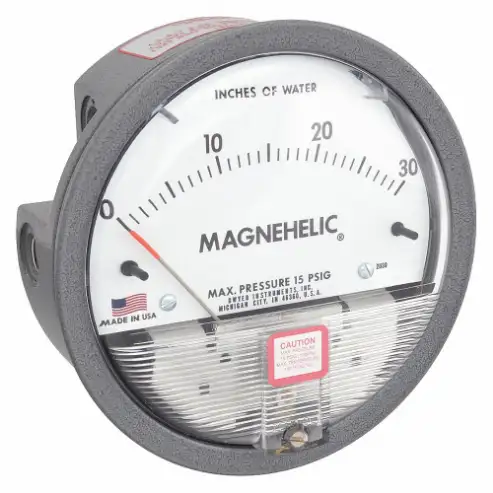The 2000 Series Magnehelic® differential pressure gauges provide an accurate, economical indication of positive, negative, or differential air pressure in HVAC applications and building automation systems, BAS. The pressure gauge includes a 4 in (10.2 cm) easy-to-read dial and a frictionless magnetic movement in a cast aluminum housing. The differential pressure gauge is resistant to shock, vibration, and overpressure. The Magnehelic® Gauge has both back and side connections, so that it may be either surface- or flush-mounted. Ranges are available from 0 in to 0.25 in W.C. up to 10'' W.C.
Features:
- Dwyer 2010 Magnehelic differential pressure gauge comes with a precision litho-printed scale to allow accurate monitoring and shock-resistance.
- The mounted jewelled bearings in the unit minimise helix friction.
- It prevents gauge blowout and accidental drops as well as eliminates light reflection due to clear plastic cap construction.
- This unit provides easily accessible zero adjustment screw location for ensuring hassle-free calibration and moulded rubber pointer stops for pointer over-travel prevention.
- The model features an iridite-dipped, precision-made die-cast aluminium case and an O-ring seal to ensure pressure-tight assembly, long-term operation and leak-tight seal.
- It has a bezel to enable flush mounting in the panel.
- The design resists shock, vibration and over-pressures and is IP67-rated for weatherproofing.
Compatible Accessories:
- Dwyer Instruments A-605 Air Filter Kit: This kit adapts any standard Magnehelic gauge for use as an air filter gauge.
- Dwyer Instruments A-432 Gauge Potable Kit: This plastic carrying case is for Magnehelic gauges of standard range. They include 9 ft (2.7m) rubber tubing (3/16 inch I.D.), stand-hang bracket & terminal tube with holder.
Standards and Approvals:
Frequently Asked Questions:
Q. How will the installation of a Magnehelic gauge 150 ft away from the pressure source affect accuracy?
A. While accuracy will be unaffected, response time will increase proportionally to the length of the tubing.
Q. How is the differential pressure gauge calculated?
A.
- Calculate the volumetric flow rate square.
- Find the flow factor's square.
- Subtract the square of the flow factor from the square of the volumetric flow rate.
- To find the differential pressure, multiply the outcome by the fluid's specific gravity.
Q. What is the difference between a static pressure sensor and a differential pressure sensor?
A. A differential pressure sensor, often known as a DP sensor, is a unique kind of pressure sensor that gauges the difference in pressure between two ports on a device. It is distinct from a static or absolute pressure sensor that uses a single port to measure pressure.
 Change Country
Change Country

